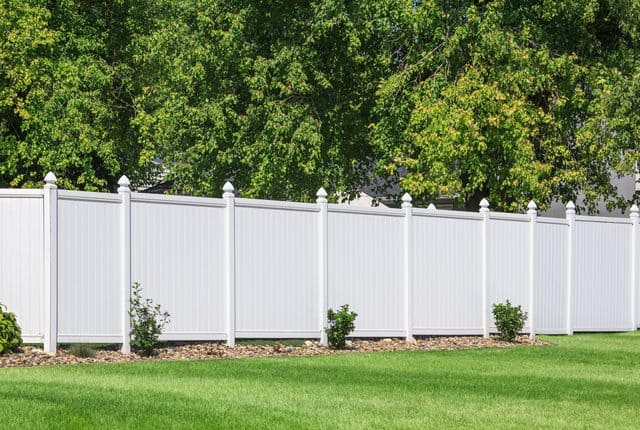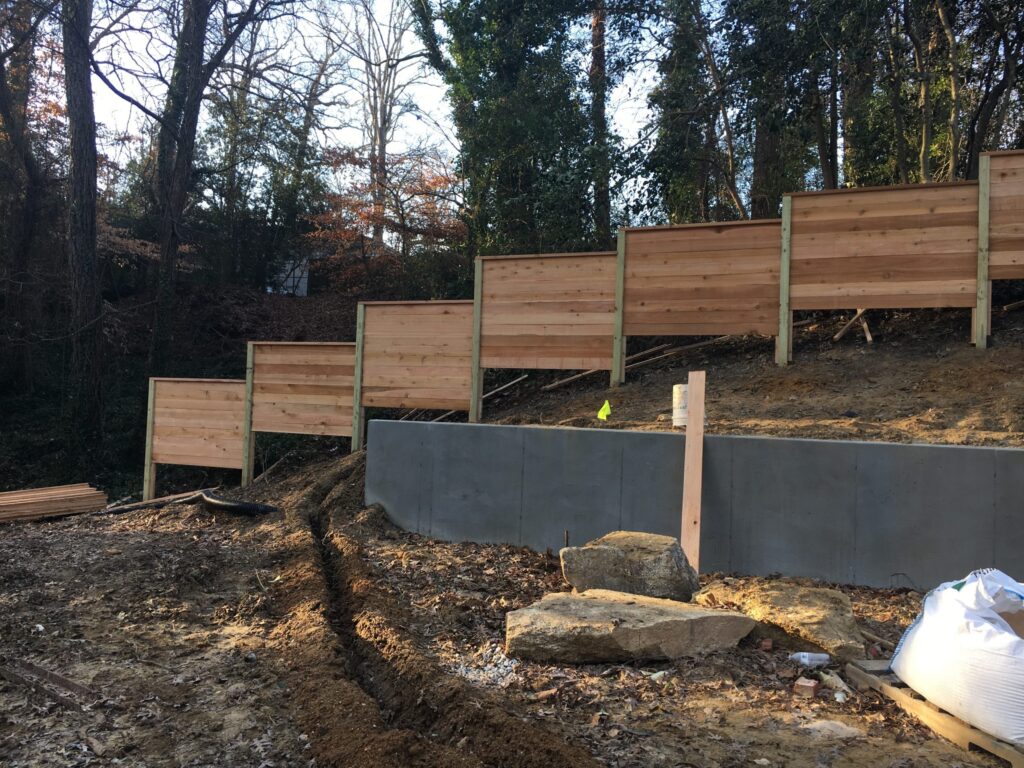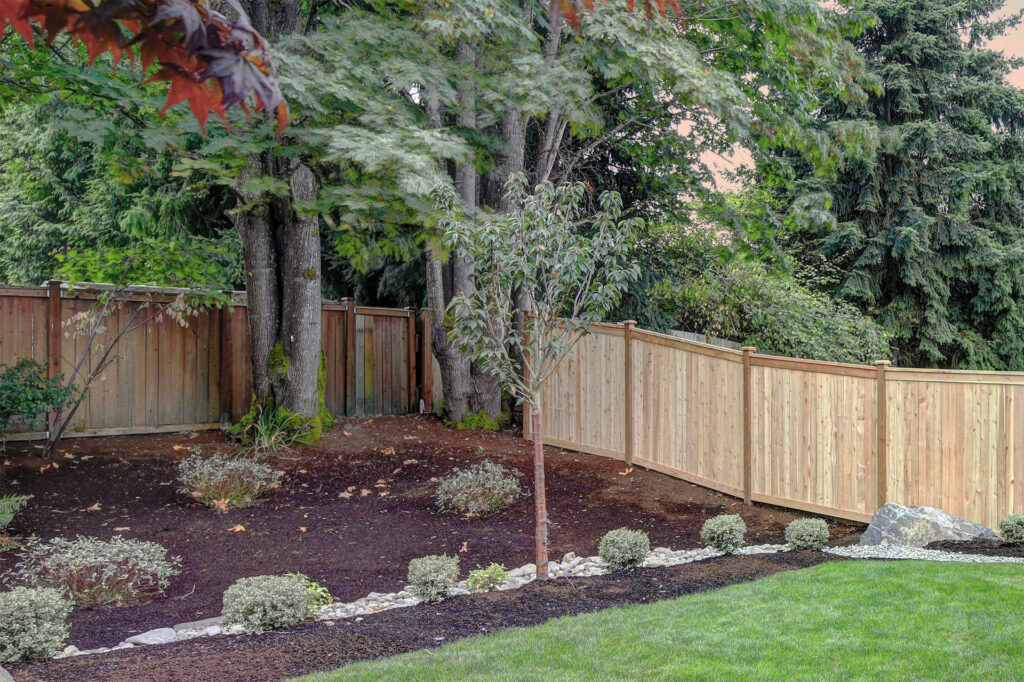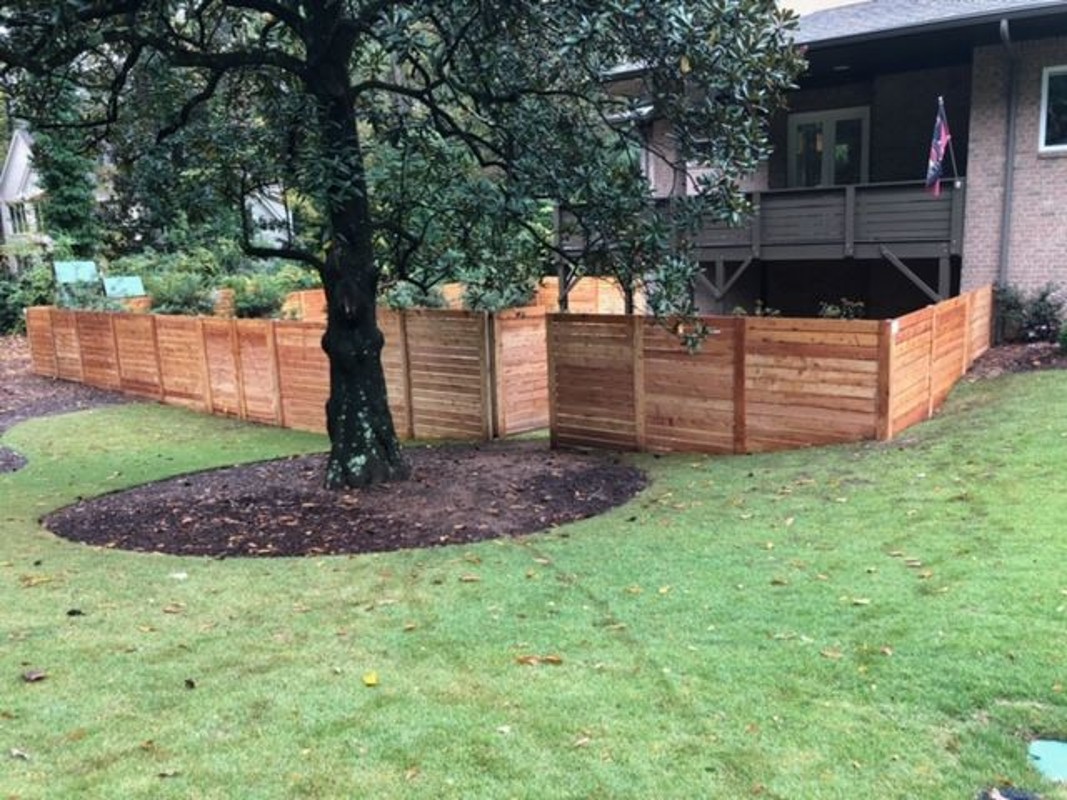Looking to expand his fence blog, the creator of “fencedude.com” is dedicated to providing comprehensive and engaging content about all things fences. From different types, sizes, shapes, and materials to their suitability for specific needs, the aim is to educate readers on the characteristics and advantages of various fence types. By exploring the benefits and considerations of each type, discussing durability, maintenance requirements, and aesthetic appeal, the blog creates a valuable resource for readers to make informed decisions. Additionally, topics such as choosing the appropriate size and shape of a fence based on specific requirements will be addressed. Through thorough research and analysis, the blog will cater to the specific interests and preferences of its target audience, ensuring it becomes the go-to resource for all things related to fences.

117. Building Fences on Uneven Ground: Tips and Considerations
Building a fence on uneven ground can present a unique set of challenges. However, with the right tips and considerations, you can successfully navigate these obstacles and create a sturdy and aesthetically pleasing fence. In this comprehensive article, we will discuss various factors to consider, the right type of fence for uneven ground, determining the boundary and layout, preparing the ground, securing fence posts, addressing height variations and gaps, considering slope and incline, creating a level top and bottom, ensuring stability and durability, common challenges and solutions, as well as the pros and cons of building fences on uneven ground. So let’s dive in!
Factors to consider before building a fence on uneven ground
Terrain evaluation and analysis
Before starting any fence installation project, it is essential to evaluate and analyze the terrain on which you plan to build the fence. Assess the slope, incline, and any other irregularities in the ground. This evaluation will help you determine the level of difficulty and the specific considerations needed for your fence installation.
Determining the slope and incline
Understanding the slope and incline of the ground is crucial for planning and designing your fence. Measure the degree of slope and determine whether it is a gradual slope or a steep incline. This information will inform your choice of fence type and also help you determine the best approach for installation.
Understanding local regulations and restrictions
Before starting any fence installation, it is important to research and understand the local regulations and restrictions regarding fence construction. Check the setback requirements, height restrictions, and any other guidelines that may impact your fence design.
Budget and time constraints
Consider your budget and time constraints when planning your fence on uneven ground. Some fence types and installation methods may be more costly and time-consuming than others. Assess your resources and make an informed decision based on what is feasible for you.
Choosing the right type of fence for uneven ground
Wooden fences
Wooden fences are a popular choice for many homeowners due to their durability and natural appearance. When building a wooden fence on uneven ground, consider using flexible fence panels that can be adjusted to accommodate the terrain. This will help maintain a consistent look throughout the fence while still conforming to the uneven ground.
Vinyl fences
Vinyl fences offer a low-maintenance option for uneven ground. These fences come in various styles and can be adjusted to suit different slopes and inclines. Vinyl fences are resistant to rot, insects, and weather conditions, making them a durable choice for uneven terrain.
Chain-link fences
Chain-link fences are known for their versatility and affordability. When installing a chain-link fence on uneven ground, consider using tension wire to help maintain the fence’s stability. This wire can be tightened as needed to keep the chain-link fabric taut and prevent the fence from sagging or bending.
Metal fences
Metal fences, such as aluminum or wrought iron, can be a stylish and durable choice for uneven ground. These fences often require custom fabrication to accommodate the terrain, allowing for a seamless and visually appealing installation.
Composite fences
Composite fences are made from a combination of wood fibers and recycled plastic. These fences are known for their durability and resistance to rot, decay, and insects. Composite fences can be adjusted to fit uneven ground by using longer posts or adding stepping panels.
Considerations for each fence type
When choosing the right type of fence for uneven ground, consider factors such as durability, maintenance requirements, aesthetic appeal, and budget. Each fence type has its own advantages and considerations, so make sure to evaluate which one best suits your specific needs and the characteristics of the terrain on which you are building.
Determining the boundary and layout of the fence
Marking the property boundaries
Before installing a fence, it is crucial to accurately mark the boundaries of your property. Use boundary markers or consult with a professional surveyor to ensure the fence is installed within your property lines. This will help you avoid any legal disputes or issues with neighboring properties.
Determining the fence’s purpose and design
Decide on the purpose and design of your fence. Is it primarily for privacy, security, or aesthetic enhancement? Understanding the purpose will help you determine the height, material, and style of the fence. Take into consideration the existing aesthetics of your property to ensure that the fence design complements the overall look.
Mapping out the fence layout
Once you have determined the purpose and design of your fence, map out the layout. Consider the terrain and adjust the fence route accordingly. Take into account any obstacles, such as trees or rocks, and plan for gate locations that provide convenient access to the enclosed area.

Preparing the ground for fence installation
Clearing vegetation and debris
Before installing a fence, clear the area of any vegetation, rocks, or debris that may interfere with the installation process. This will ensure a clean and stable foundation for your fence.
Leveling the ground
Even on uneven ground, it is essential to create a level base for your fence. Use a shovel, rake, or other leveling tools to remove high spots and fill in low areas. This will provide a stable and aesthetically pleasing foundation for your fence.
Considering erosion control measures
Uneven ground can be prone to erosion. To prevent erosion from undermining the stability of your fence, consider implementing erosion control measures, such as retaining walls, terracing, or erosion control fabrics. These measures will help preserve the integrity of your fence over time.
Securing the fence posts on uneven ground
Choosing the right posts
When building a fence on uneven ground, selecting the right type of posts is crucial. Use durable materials such as pressure-treated wood, galvanized steel, or vinyl posts that can withstand the uneven terrain and potential moisture exposure.
Digging post holes on uneven ground
To ensure stability, dig post holes that are deeper than the frost line and wide enough to accommodate the size of the posts. Adjust the depth and width of the holes based on the slope or incline of the ground. Straight and plumb posts are essential for the overall stability of the fence.
Using concrete or gravel for stability
When setting the fence posts, consider using concrete or gravel for added stability. Fill the bottom of each post hole with a layer of concrete or gravel before placing the post. This will help prevent shifting and provide a solid anchor for the fence.
Supporting the posts with additional braces
On uneven ground, some fence posts may require additional support to withstand the pressure and ensure stability. Consider using braces or supports to reinforce the posts and prevent leaning or tipping over time. These additional supports can be attached to nearby structures or anchored into the ground.

Addressing height variations in the fence
Options for adjusting fence height
When building a fence on uneven ground, you may encounter height variations along the fence line. To address this, you have a few options. You can choose to install a fence that follows the contour of the ground, opt for stepped panels, or create staggered heights to accommodate the uneven terrain.
Using step fences on steep slopes
For steep slopes, step fences are an effective solution. Step fences involve installing panels at different heights, creating a stepped or terraced effect. This not only provides stability but also enhances the visual appeal of the fence.
Creating staggered heights
In areas with minor height variations, creating staggered heights can help maintain a relatively level appearance. Staggering the fence panels at different heights will allow them to follow the contour of the ground while still providing a consistent barrier.
Dealing with gaps and spaces in the fence
Using fillers or spacers
Gaps and spaces can occur when building a fence on uneven ground. To address these gaps, consider using fillers or spacers. Fillers, such as gravel or sand, can be used to fill in small gaps between the ground and the bottom of the fence panels. Spacers can also be placed between panels to eliminate larger gaps.
Installing panels or slats to cover gaps
If the gaps are too large to be filled with fillers or spacers, consider installing additional panels or slats to cover the gaps. This will ensure privacy, security, and aesthetic uniformity throughout the fence.

Considering slope and incline on uneven ground
Installing a stepped fence
A stepped fence is an excellent option for moderate to steep slopes. By installing panels at different heights, you can follow the contour of the slope, creating a visually appealing and structurally stable fence.
Constructing a racked or sloped fence
A racked or sloped fence is another solution for dealing with slope and incline on uneven ground. This type of fence involves angling the fence panels to match the slope, providing a consistent barrier while maintaining the level appearance of the fence.
Using a contoured fence system
In areas with significant slope variations, a contoured fence system can be used. This system involves customizing the fence panels to match the specific contour of the ground, ensuring a seamless and aesthetically pleasing installation.
Creating a level top and bottom for the fence
Using string lines to ensure levelness
To create a level top and bottom for the fence, use string lines as a guide. String lines can help ensure that the fence panels are installed at a consistent height and parallel to the ground. This will result in a straight and visually appealing fence.
Utilizing a laser level for accuracy
For precise leveling, consider using a laser level. Laser levels provide accurate measurements and make it easier to install the fence panels at a consistent height. This will eliminate any discrepancies and ensure a professional finish.
Adjusting the fence panels for a level appearance
During the installation process, make adjustments as needed to ensure a level appearance. Use shims or spacers between the fence panels and the posts to correct any gaps or unevenness. This attention to detail will contribute to the overall stability and aesthetic appeal of the fence.

Ensuring stability and durability of the fence
Using additional support for stability
On uneven ground, stability is key to ensuring the longevity of your fence. Consider installing additional support systems, such as diagonal bracing or horizontal rails, to reinforce the fence and prevent sagging or leaning over time. These measures will enhance the overall stability and durability of the fence.
Considering wind load and impact resistance
When building a fence on uneven ground, take into account the local weather conditions and wind load. Plan for the fence’s resistance to strong winds by using appropriate materials and installation methods. Additionally, consider impact resistance to protect the fence from potential damage caused by falling branches or other hazards.
Choosing the right materials for durability
Selecting durable materials is crucial for building a fence on uneven ground. Choose materials that can withstand the elements, such as pressure-treated wood, aluminum, or vinyl. Consider the maintenance requirements and longevity of the materials to ensure a durable and long-lasting fence.
Common challenges and solutions when building fences on uneven ground
Dealing with excessive soil erosion
One common challenge when building a fence on uneven ground is excessive soil erosion. To combat this issue, implement erosion control measures such as retaining walls, terracing, or erosion control fabrics. These measures will help minimize soil erosion and preserve the stability of your fence.
Addressing drainage issues
Uneven ground can sometimes lead to drainage problems, which can affect the stability of your fence. Ensure proper drainage by grading the ground away from the fence, installing French drains or other drainage systems, and avoiding any obstruction of natural drainage paths.
Managing potential water damage
Water damage can be a concern when building a fence on uneven ground. To prevent water damage, use materials that are resistant to moisture, apply protective coatings or sealants, and ensure proper water runoff by implementing appropriate drainage solutions. Regular maintenance and inspections will also help identify and address any potential water damage issues.
Pros and cons of building fences on uneven ground
Advantages of installing fences on uneven ground
Building a fence on uneven ground offers several advantages. It allows for the utilization of otherwise challenging areas, creates a unique and visually appealing landscape, and can provide privacy and security within a diverse terrain. Additionally, building on uneven ground allows for the natural flow of the landscape, enhancing the overall aesthetics of the property.
Disadvantages and challenges of uneven ground
While building fences on uneven ground has its advantages, it also presents certain disadvantages and challenges. Uneven ground may require additional time and effort to level and prepare. It may also involve more complex installation techniques, require customized materials, and potentially incur higher costs compared to building on level ground.
Conclusion
Building fences on uneven ground can be a rewarding and challenging endeavor. By considering the various factors, choosing the right type of fence, determining the boundary and layout, preparing the ground, securing fence posts, addressing height variations and gaps, considering slope and incline, creating a level top and bottom, and ensuring stability and durability, you can successfully overcome the obstacles presented by uneven terrain. However, it is important to conduct thorough research, consult professionals when needed, and adhere to local regulations to ensure a successful and long-lasting fence installation.
Now that you have a comprehensive understanding of building fences on uneven ground, let’s address the most common questions that people have about fences:
- Can I build a fence on a slope?
- How do I know if my property lines are accurate before building a fence?
- What type of fence is best for privacy?
- How do I maintain a wooden fence on uneven ground?
- Can I install a fence myself, or do I need to hire a professional?
- Are there any height restrictions for fences on uneven ground?
- What materials are best for a durable fence on uneven ground?
- How do I deal with gaps between fence panels on uneven ground?
- Will a fence on uneven ground require more maintenance than on level ground?
- How do I prevent erosion around a fence on uneven ground?
These questions cover a range of concerns and will help address the most common uncertainties that people have when building fences on uneven ground. Remember to adapt the answers to your specific situation and local regulations.
In conclusion, building fences on uneven ground requires careful planning, considerations, and execution. Follow the tips and recommendations provided in this article, conduct thorough research, and consult professionals when needed to ensure a successful fence installation. With the right approach, you can overcome the challenges and create a sturdy and aesthetically pleasing fence that perfectly complements your property.
